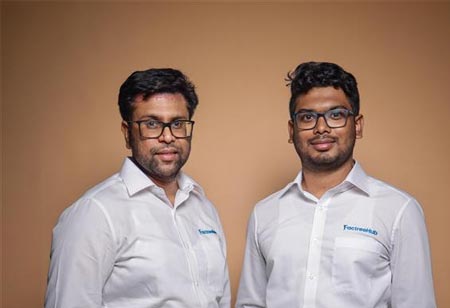
In an interaction with Industry Outlook India, Arun Mugilan, Founder & CEO and Karthick Anand, Co-Founder & COO, Factreehub, discusses how Indian firms are leveraging AI-assisted Multiphysics simulations to streamline design-validation cycles, enhance R&D efficiency, and meet localization demands.
Arun Mugilan brings visionary leadership and deep expertise in engineering and digital transformation. With a passion for innovation, he drives the company’s mission to simplify industrial product sourcing and accelerate digital adoption in manufacturing.
Karthick Anand leads operations with a strong focus on process excellence and customer experience. He plays a key role in scaling Factreehub’s platform, ensuring efficient execution and sustainable growth.
With increasing product complexity in sectors like EVs and aerospace, how are Indian firms leveraging Multiphysics simulations to streamline design-validation cycles and accelerate time-to-market?
Indian firms adopt Multiphysics simulation to compete with their competitors and to optimize the design by coupling the thermal, structural, and electromagnetic behavior together, which in turn improves the accuracy of results with real conditions. The R&D activity of FEA engineers coordinating with the laboratory results, paying them a way to find a solution and its best method to correlate the FEA results. Additionally, employing best practices for each variant, combined with extensive permutations and combinations, leads to more effective solutions for Multiphysics problems and significantly streamlines the design validation cycle.
What are the key bottlenecks Indian engineering teams face while integrating structural, thermal, and fluid simulations into a unified Multiphysics framework across legacy systems?
Indian engineering teams integrating structural, thermal, and fluid simulations into a unified Multiphysics framework across legacy systems face several key bottlenecks. One major challenge is the need to invest in integrated simulation platforms, such as high-performance computing (HPC) and cloud-based systems, to efficiently handle larger model sizes and higher element counts within shorter timeframes. Additionally, enhancing the skill sets of engineers without disrupting existing workflows is critical for successful adoption and deployment within engineering organizations. Reducing simulation runtimes is also essential to achieve accurate results quickly, ensuring that the overall design cycle remains efficient and competitive.
How are Multiphysics simulation platforms enabling predictive maintenance and failure analysis in India's process-heavy sectors like oil & gas, power, and chemical manufacturing?
Pressure vessels and Heat exchangers are prone to failure due to factors like corrosion, thermal stress, or pressure overload. By modeling these factors, engineers can pinpoint the precise cause of a failure and prevent it from happening again. Thermo-coupled structural analysis helps in predicting the structural behavior due to changes in temperature and flow in tube and tube sheets of the heat exchanger. The oil and gas sector is exposed to extreme conditions like high pressure and corrosive chemicals. By using multi-physics simulations, engineers can test various materials and coating methods to select the most durable solution, reducing the likelihood of leaks and failures.
In what ways is the demand for virtual prototyping through Multiphysics models influencing R&D efficiency and budget allocation in Indian engineering design firms?
The combination of reduced costs, faster development cycles, improved product performance, and better decision-making provides a competitive advantage in the global market, while also fostering innovation and sustainability in product design. By identifying potential design flaws or performance issues early in the design process through simulations, firms can reduce the risk of product failure in later stages and improve cost efficiency effectively.
How are Indian OEMs adapting Multiphysics simulations to meet localization demands, especially for optimizing performance under region-specific environmental and usage conditions?
Indian OEMs are increasingly adopting Multiphysics simulations to address localization demands and optimize product performance under India’s unique environmental and usage conditions. Given the country’s extreme temperatures, high humidity, and challenging operational environments, Multiphysics simulations have become essential for accurately predicting product behavior and achieving reliable performance. Additionally, the usage of products in such conditions undergoes overuse and higher fatigue loads, making it difficult to consistently meet guaranteed product lifespans. To address this, OEMs are not only leveraging advanced simulations but are also focusing on customer education. Providing clear guidelines in user manuals about proper product use across different climatic conditions to help mitigate early failures and support longer product life in diverse Indian scenarios.
What advancements in AI-assisted Multiphysics modeling could transform how Indian industries approach real-time simulation and design optimization in the next five years?
Advancements in AI-assisted Multiphysics modeling will revolutionize real-time simulation and design optimization for Indian industries over the next five years. AI will significantly reduce turnaround times, especially in sectors like oil and gas, by enabling rapid pressure vessel design and stress-based structural topology optimization. Additionally, AI integration with programming languages like Python will automate repetitive tasks, such as report generation, with minimal supervision, accelerating product development and bringing products to market much faster.
We use cookies to ensure you get the best experience on our website. Read more...